Hanging plants add beauty, greenery, and a touch of freshness to any space.
They brighten corners, purify the air, and make your home feel more alive. But maintaining them isn’t always easy.
Since they’re off the ground, they often need a little extra attention when it comes to watering, pruning, feeding, and ensuring they get enough light. With the right care techniques, however, hanging plants can stay lush and vibrant for years.
Why Hanging Plants Need Special Care Compared to Floor Plants
Hanging plants may look effortless, but they actually require more thoughtful care than plants placed on shelves or the floor.
Because they are elevated, they experience faster moisture loss, uneven light exposure, and limited root space. This makes proper watering, feeding, and placement even more important.
Another factor many people overlook is air circulation. Hanging plants are constantly exposed to moving air from fans, windows, or air conditioning, which can dry out the soil quickly.
Using the right soil mix, high-quality hanging planters, and proper drainage can significantly reduce maintenance issues while improving plant health.
When hanging plants are maintained correctly, they not only grow faster but also look fuller and more balanced, enhancing the overall aesthetics of your home.
What happens when you maintain hanging plants in the right way
When you maintain hanging plants the right way, they reward you with beauty and lasting health. Here are five key benefits:
Lush and Vibrant Growth – Proper watering, feeding, and pruning encourage fuller, greener foliage and continuous growth throughout the year.
Longer Lifespan – Healthy care prevents root rot, pests, and diseases, allowing your plants to live and thrive for many seasons.
More Blooms and Freshness – Flowering varieties produce more blooms, while foliage plants stay fresh and radiant, brightening your space naturally.
Cleaner Indoor Air – Well-maintained hanging plants efficiently absorb toxins and release oxygen, improving air quality and creating a fresher atmosphere.
Beautiful Aesthetic Appeal – Healthy, balanced plants enhance the overall look of your home or garden, adding charm and a touch of nature’s elegance to any setting.
Here are six clever ways to maintain your hanging plants so they continue to thrive beautifully.
1. Choose the Right Type of Hanging Plant
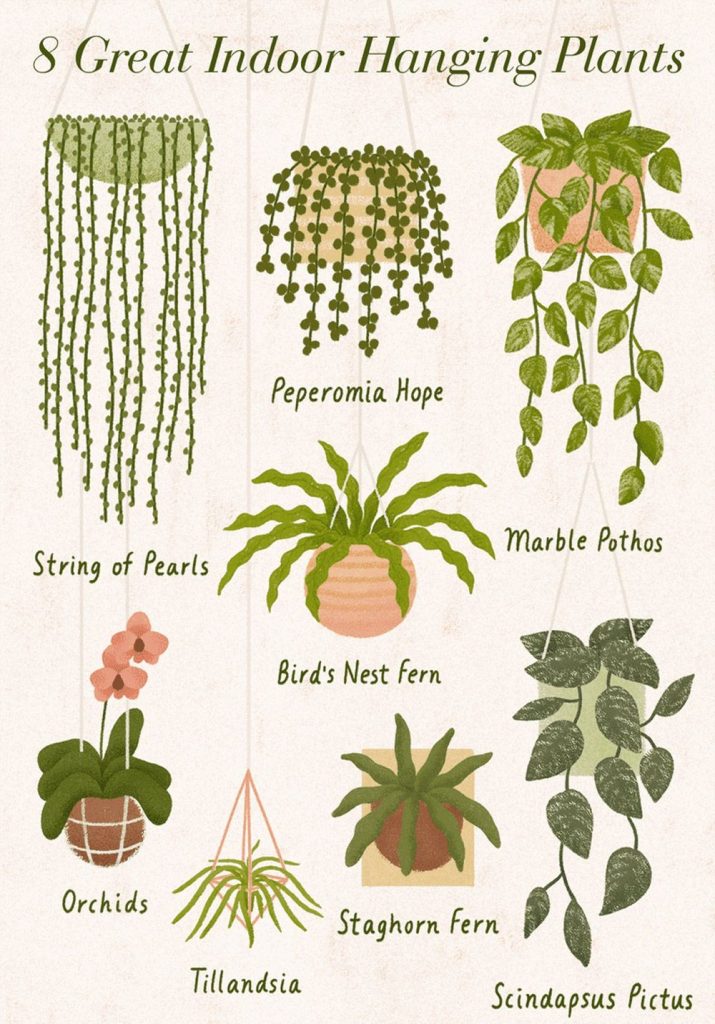
The first and most important step in maintaining hanging plants is choosing the right type of plant.
Not all plants do well when suspended in the air. Some need frequent watering, others demand more sunlight, and a few may grow too heavy for hanging baskets. The key is to select plants that are naturally suited for hanging arrangements.
For instance, trailing varieties like pothos, spider plants, English ivy, and string of pearls are perfect choices.
These plants cascade beautifully and grow well in small containers. Ferns, philodendrons, and petunias are also excellent options because they can handle varying light conditions and don’t require constant watering.
If your home receives bright but indirect sunlight, hanging plants like Boston ferns and heartleaf philodendrons will do wonderfully.
For low-light corners, go for pothos or English ivy. In outdoor areas, flowering plants like petunias, lobelia, and geraniums add vibrant color while being fairly low-maintenance.
Before hanging your plants, also consider the pot size and the strength of the hook or bracket.
A sturdy base ensures your plants won’t fall, even when watered. Choosing the right type of plant and pot from the beginning saves a lot of maintenance effort later.
2. Water Smartly and Efficiently
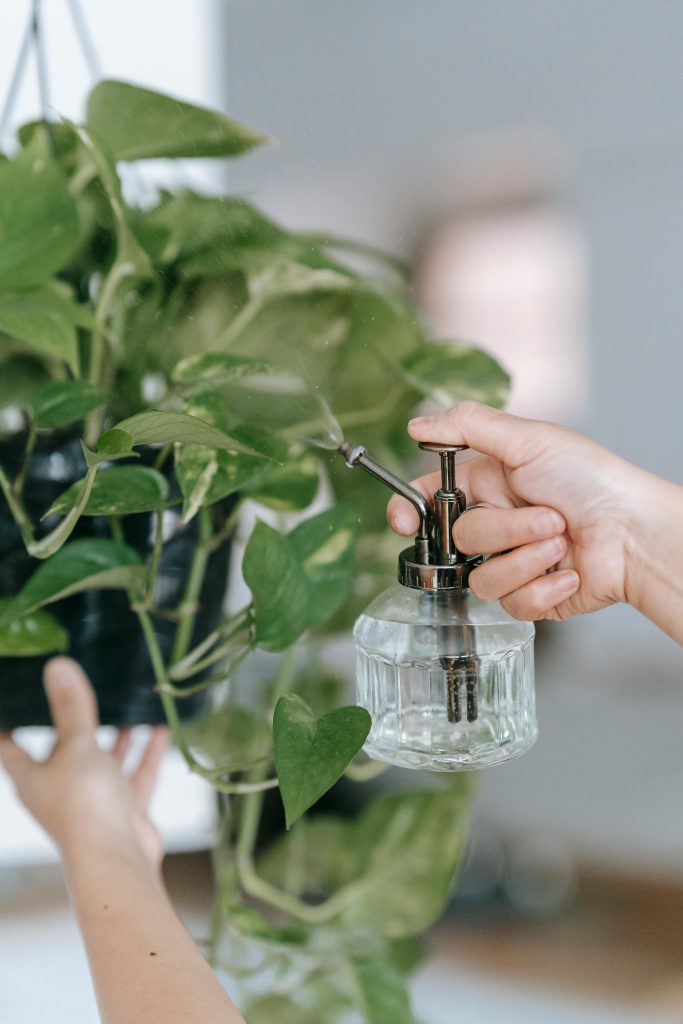
Watering hanging plants can be tricky because they tend to dry out faster than those placed on the ground.
Since air circulates freely around them, moisture evaporates more quickly. One clever way to maintain them is to water smartly — not just frequently.
Always check the moisture level before watering. Stick your finger about an inch deep into the soil. If it feels dry, it’s time to water.
However, don’t overwater, as excess moisture can lead to root rot. Make sure your hanging pots have drainage holes to let out excess water.
A useful trick is to take your hanging plant down and water it thoroughly in the sink. Let the water drain completely before rehanging it.
This ensures the soil is fully moist without leaving stagnant water in the pot.
If your schedule is busy, self-watering hanging planters can be a real lifesaver. These pots come with built-in reservoirs that gradually release water into the soil as needed.
You can also line the base of your hanging basket with a layer of coconut coir or sphagnum moss to retain moisture.
During the summer months, increase watering frequency since the heat can dry out the soil faster.
In winter, reduce watering as plants typically require less moisture. A regular watering schedule will keep your hanging plants hydrated, healthy, and green.
The type of soil and planter you use plays a huge role in the long-term health of hanging plants.
Best Soil and Planters for Healthy Hanging Plants
A lightweight, well-draining potting mix is essential because heavy soil can retain too much moisture and cause root rot. Look for mixes that contain perlite, coco peat, or pine bark for better aeration.
Choosing the right planter also makes maintenance easier. Plastic hanging pots retain moisture longer and are ideal for indoor use, while terracotta pots allow better airflow but may require more frequent watering.
Self-watering hanging planters are a smart option for beginners or anyone with a busy schedule.
Always ensure your planter has proper drainage holes. Without drainage, excess water collects at the bottom and damages the roots, no matter how carefully you water.
3. Feed Them with the Right Nutrients
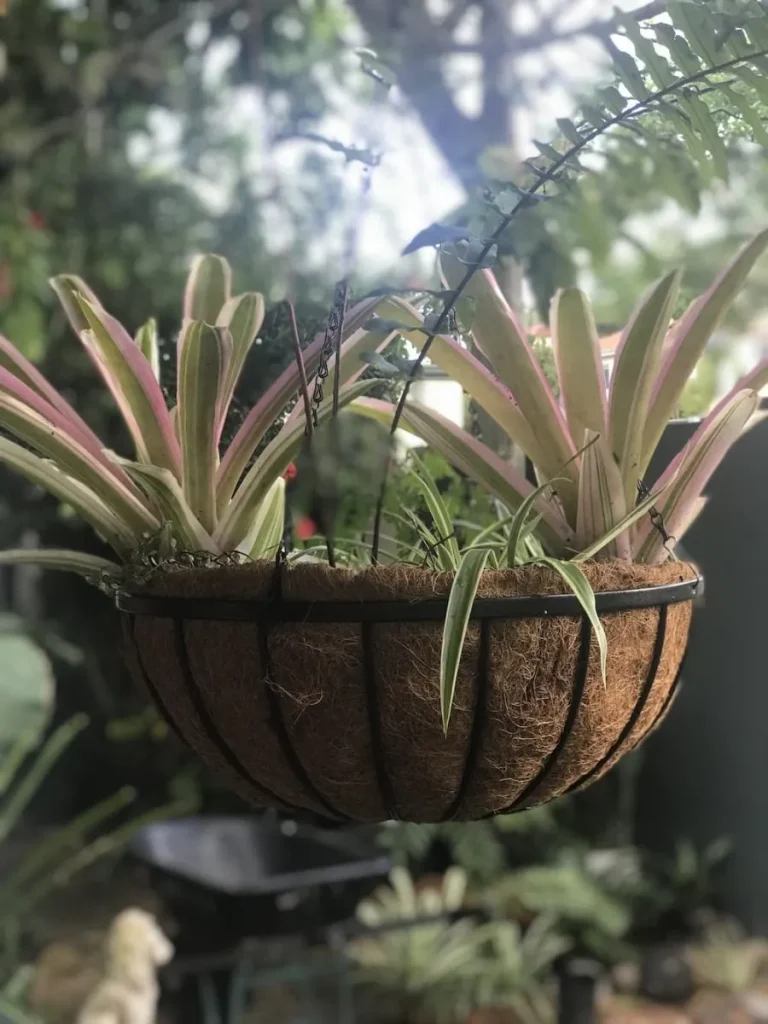
Like any other plant, hanging plants need nutrients to stay strong and vibrant. Because their soil space is limited, the nutrients deplete faster.
This means you need to feed them more regularly compared to ground plants.
Use a balanced, water-soluble fertilizer every two to four weeks during the growing season (spring and summer). For flowering plants, you can use a fertilizer that’s higher in phosphorus to encourage more blooms.
For foliage plants like ferns and pothos, a balanced formula with equal parts nitrogen, phosphorus, and potassium works best.
Be careful not to over-fertilize. Too much fertilizer can burn the roots and lead to yellowing leaves.
It’s better to use a diluted solution rather than a full-strength one. Always water the plant before applying fertilizer to avoid shocking the roots.
You can also use organic fertilizers such as compost tea, worm castings, or seaweed extract.
These natural options enrich the soil gradually and improve its texture over time.
Another clever maintenance trick is to repot your hanging plants once a year. Over time, the soil can become compacted, reducing aeration and water absorption.
Replacing the top layer of soil with fresh potting mix gives the plant renewed energy and better nutrient access.
How Often Should You Repot Hanging Plants?
Hanging plants eventually outgrow their containers, which can restrict root growth and reduce nutrient absorption.
Repotting once every 12 to 18 months helps refresh the soil and gives the roots more space to grow.
Signs that your hanging plant needs repotting include roots growing out of drainage holes, slow growth, yellowing leaves, or soil that dries out too quickly.
When repotting, choose a container that is one size larger and use fresh, nutrient-rich potting soil.
Repotting also gives you a chance to inspect the roots for pests or disease and remove any damaged sections.
This simple step can dramatically improve plant health and longevity.
4. Prune and Trim Regularly
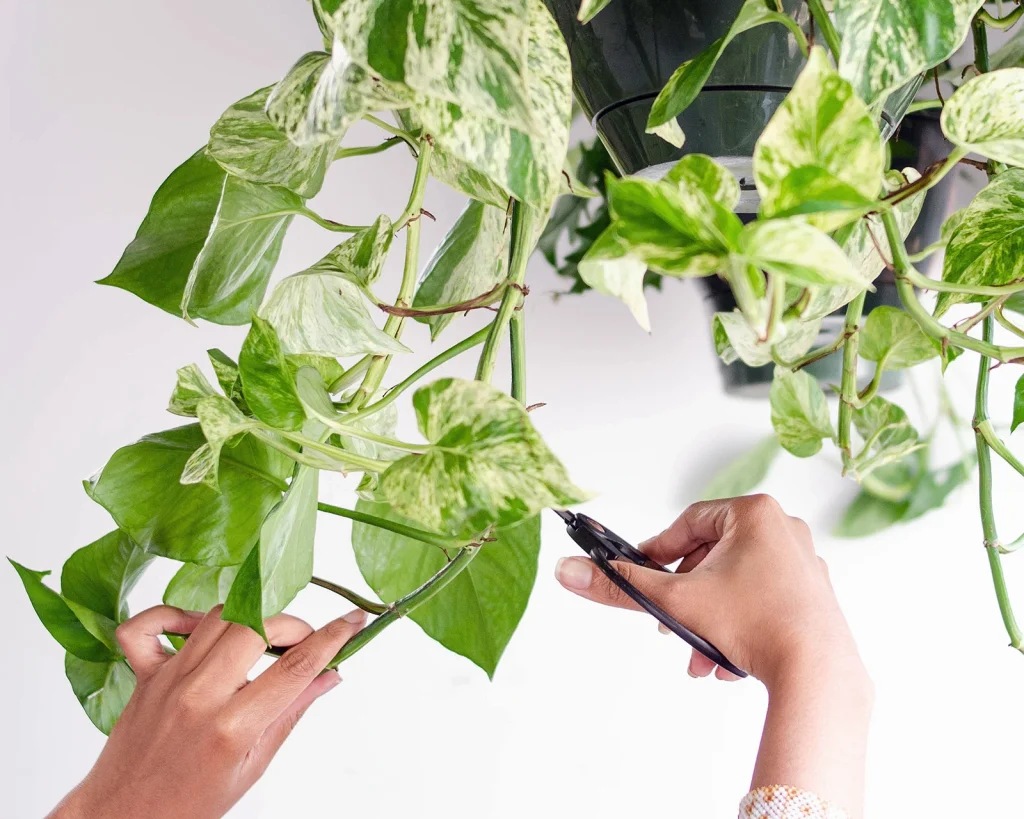
Regular pruning is essential for maintaining the shape and health of hanging plants.
Since many hanging plants have a trailing nature, they can quickly grow wild or uneven. Trimming helps keep them looking neat and encourages fuller growth.
Remove dead, yellow, or damaged leaves regularly to improve airflow and reduce the risk of pests or diseases.
Pinch off the growing tips occasionally — this promotes branching and creates a denser appearance.
For flowering plants, remove spent blooms to encourage new flowers.
This process, known as deadheading, helps redirect the plant’s energy toward fresh growth rather than seed production.
If a particular vine grows too long or starts looking sparse, trim it back slightly above a leaf node.
Within a few weeks, you’ll notice new shoots emerging, giving your plant a rejuvenated look.
Pruning also makes watering and fertilizing more efficient, as nutrients are better distributed throughout the plant.
Regular trimming keeps your hanging plants looking lush and balanced while preventing them from becoming leggy or tangled.
5. Rotate for Even Light Exposure
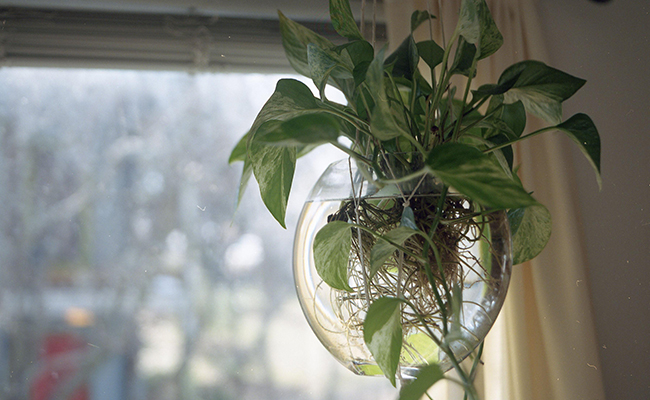
Light plays a major role in the health of hanging plants. One clever maintenance technique is to rotate them every few weeks.
This ensures all sides of the plant receive equal sunlight, promoting even growth and preventing one-sided development.
If your hanging plants are indoors, place them near a bright window where they can receive indirect sunlight for most of the day.
Avoid exposing them to direct, harsh rays, as this can scorch the leaves. Sheer curtains can help diffuse the light.
For plants that prefer lower light, position them in areas that still receive natural brightness, such as near east-facing windows.
If your space is dim, consider using grow lights to supplement natural light.
Outdoor hanging plants may need to be moved occasionally depending on the season. During summer, ensure they’re shaded during the hottest part of the day to prevent leaf burn.
In winter, bring them indoors or place them in a sheltered spot to protect from cold winds.
By rotating and repositioning your hanging plants regularly, you’ll maintain even, symmetrical growth and healthier foliage.
This simple practice makes a big difference in how your plants look over time.
Ideal Temperature and Humidity for Hanging Plants
Temperature and humidity levels directly affect how well hanging plants thrive. Most indoor hanging plants prefer temperatures between 65°F and 80°F, making them well-suited for homes and apartments.
Sudden temperature changes from heaters or air conditioners can stress plants and slow growth.
Humidity is equally important, especially for tropical plants like ferns and philodendrons. If the air in your home is dry, consider misting the plants occasionally or placing a small humidifier nearby.
Grouping hanging plants together can also help maintain consistent humidity levels.
Maintaining stable temperature and humidity conditions encourages healthier leaves, stronger roots, and better overall growth.
6. Keep an Eye on Pests and Clean the Leaves
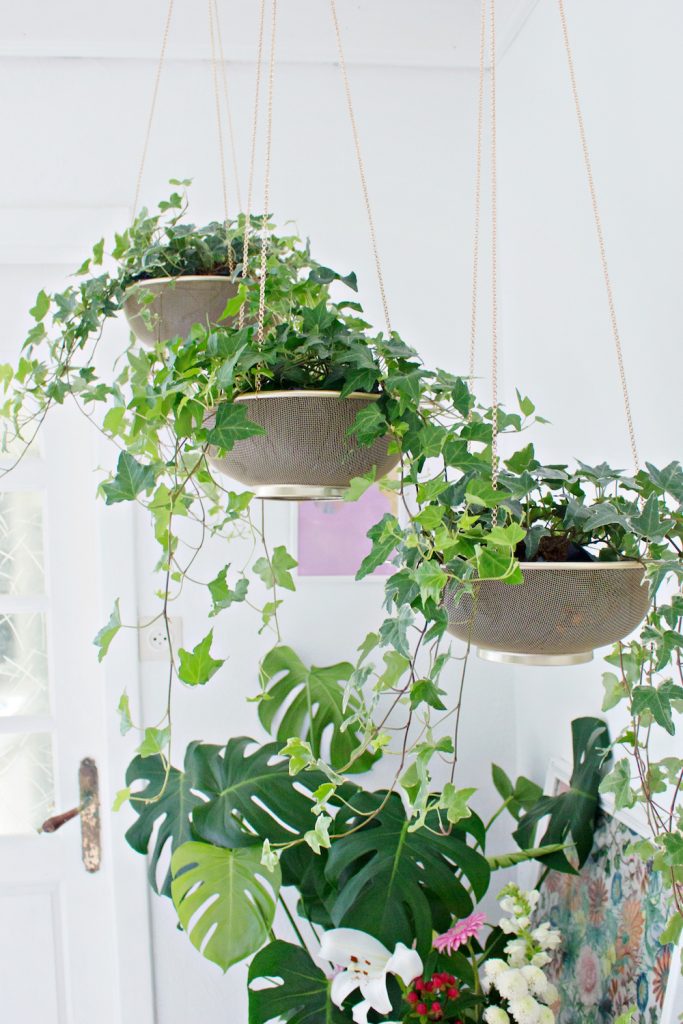
Hanging plants, though elevated, aren’t completely safe from pests.
Common culprits include spider mites, aphids, and mealybugs, which can damage the leaves and stunt growth. It’s important to inspect your plants regularly for early signs of infestations.
Look for small holes, sticky residue, webbing, or discolored patches on the leaves. If you notice pests, act quickly.
You can gently wipe the leaves with a soft cloth dipped in mild soapy water or spray the plant with a mixture of water and neem oil.
This natural solution helps deter most insects without harming the plant.
Cleaning the leaves also helps the plant breathe better. Dust and grime can block sunlight absorption and reduce photosynthesis.
Wipe the leaves every few weeks using a damp cloth or gently rinse them under a light shower.
For plants with fuzzy or delicate leaves, avoid wiping directly. Instead, use a soft brush to remove dust.
Keeping your hanging plants clean not only improves their health but also enhances their overall appearance.
You can also prevent pest problems by ensuring good air circulation around the plants.
Avoid overcrowding them and make sure there’s enough space for air to move freely. Healthy plants with proper airflow are less likely to attract pests.
Maintaining hanging plants may seem challenging at first, but with these clever strategies, it becomes simple and enjoyable.
Common Hanging Plant Mistakes to Avoid
One of the most common mistakes people make with hanging plants is overwatering.
Because the plants are out of sight, it’s easy to water them too frequently. Always check soil moisture before watering.
Another mistake is hanging plants too high, making regular care difficult.
If watering, pruning, or inspecting becomes a hassle, the plant is more likely to be neglected. Use adjustable hangers so you can lower the plant when needed.
Ignoring light requirements is another issue. Even low-light plants still need some natural brightness. Placing them in dark corners can lead to weak, leggy growth over time.
Avoiding these simple mistakes can greatly improve the health and appearance of your hanging plants.
Start by choosing the right plants and providing them with proper water, nutrients, and light. Regular pruning, rotation, and cleaning go a long way in keeping them healthy and vibrant.
Hanging plants bring life, beauty, and a natural charm to any home or garden. Whether you have them in your balcony, kitchen, or living room, a little care and consistency will ensure they thrive all year long.
With these six smart maintenance tips, your hanging plants will reward you with lush foliage, cascading vines, and a constant reminder of nature’s refreshing presence — right above your head.
